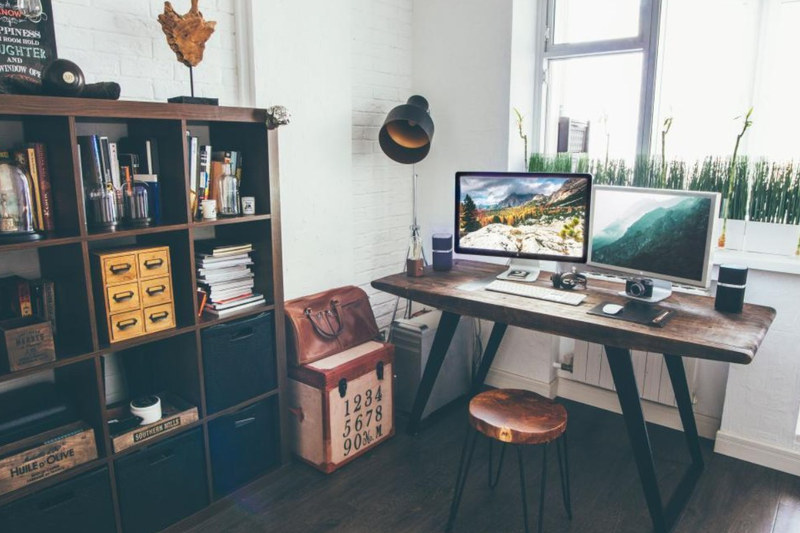
Creating an effective home office space is more crucial than ever, with millions of professionals embracing remote work as a permanent lifestyle. Whether you’re converting a spare bedroom, carving out a corner of your living room, or designing a dedicated workspace from scratch, the key lies in understanding how your environment impacts your productivity, wellbeing, and professional success.
Choosing the Perfect Location
The foundation of any successful home office begins with selecting the right location within your home. Natural light should be your primary consideration, as it not only reduces eye strain but also helps regulate your circadian rhythm, keeping you alert and focused throughout the day. Position your workspace near a window if possible, but ensure you can control glare with blinds or curtains.
Consider the noise levels in different areas of your home. A quiet corner away from household traffic, television sounds, and kitchen activity will help maintain your concentration. If you live in a busy household, investing in sound-absorbing materials like rugs, curtains, or acoustic panels can create a more peaceful environment.
Privacy is equally important, especially if you participate in video calls or handle sensitive information. Choose a space where you can close a door or create visual barriers that signal to family members when you’re working.
Essential Furniture and Equipment

Your desk serves as the centrepiece of your home office, so invest in one that suits your work style and space constraints. Consider the activities you’ll be performing – do you need space for multiple monitors, physical documents, or creative materials? A desk with built-in storage can help maintain organisation in smaller spaces.
Standing desks have gained popularity among remote workers seeking to improve their posture and reduce the health risks associated with prolonged sitting. These adjustable workstations allow you to alternate between sitting and standing throughout the day, potentially increasing energy levels and reducing back pain. When selecting standing desks, ensure the height range accommodates your stature both when sitting and standing.
Your chair deserves equal attention, as you’ll likely spend several hours in it daily. Look for ergonomic features such as adjustable height, lumbar support, and armrests. The investment in a quality chair pays dividends in comfort and long-term health benefits.
Storage solutions should be both functional and aesthetically pleasing. Floating shelves, filing cabinets, and desk organisers help maintain a clutter-free environment that promotes clear thinking and efficiency.
Lighting Strategy
Proper lighting significantly impacts your productivity and mood. Layer different types of lighting to create a well-lit workspace that adapts to various tasks and times of day. Ambient lighting provides overall illumination, whilst task lighting focuses on specific work areas.
A combination of overhead lighting, desk lamps, and accent lighting creates depth and reduces harsh shadows. LED bulbs offer energy efficiency and come in various colour temperatures – cooler tones promote alertness during work hours, whilst warmer tones create a more relaxing atmosphere.
Avoid positioning your computer screen directly in front of or behind a window to prevent glare and eye strain. If natural light creates screen visibility issues, consider adjusting your desk position or investing in an anti-glare screen protector.
Technology and Connectivity

Reliable internet connectivity forms the backbone of any home office. Ensure your workspace has strong Wi-Fi signal strength, or consider using a wired ethernet connection for the most stable connection possible. A mesh network system can eliminate dead zones in larger homes.
Invest in quality peripherals that enhance your work experience. A separate keyboard and mouse, high-resolution monitor, and noise-cancelling headphones can significantly improve your productivity and comfort. Cable management systems keep your workspace tidy and prevent the frustration of tangled wires.
Consider your power needs when positioning equipment. Multiple devices require adequate electrical outlets, and surge protectors safeguard your valuable electronics from power fluctuations.
Creating the Right Atmosphere
The atmosphere of your home office influences your mindset and productivity levels. Choose colours that inspire and energise you – blues and greens often promote calm focus, whilst warmer tones can stimulate creativity and enthusiasm.
Personal touches make your workspace more inviting and reflect your personality. Family photos, artwork, or plants can provide visual interest without creating distractions. However, maintain balance – a cluttered space can overwhelm and reduce focus.
Temperature control ensures comfort throughout the day. If your chosen space lacks adequate heating or cooling, consider a small heater, fan, or air purifier to maintain optimal working conditions.
Organising for Maximum Productivity
Effective organisation systems prevent time-wasting searches for documents or supplies. Implement both physical and digital filing systems that make sense for your work processes. Labelled storage containers, document trays, and drawer organisers maintain order and efficiency.
Establish designated zones within your office space – an area for computer work, another for phone calls, and perhaps a reading corner with comfortable seating. This zoning approach helps your brain switch between different types of tasks more effectively. Regular decluttering sessions for each zone ensure these spaces remain functional rather than becoming catch-all areas for miscellaneous items.
Conclusion
Designing a home office that truly works for you requires thoughtful consideration of your specific needs, work style, and available space. By focusing on the fundamentals – location, furniture, lighting, technology, and organisation – you create an environment that supports both productivity and wellbeing. Remember that your ideal workspace may evolve over time, so remain flexible and willing to make adjustments as your work requirements change. The investment in creating a proper home office pays dividends in increased efficiency, professional satisfaction, and work-life balance.
